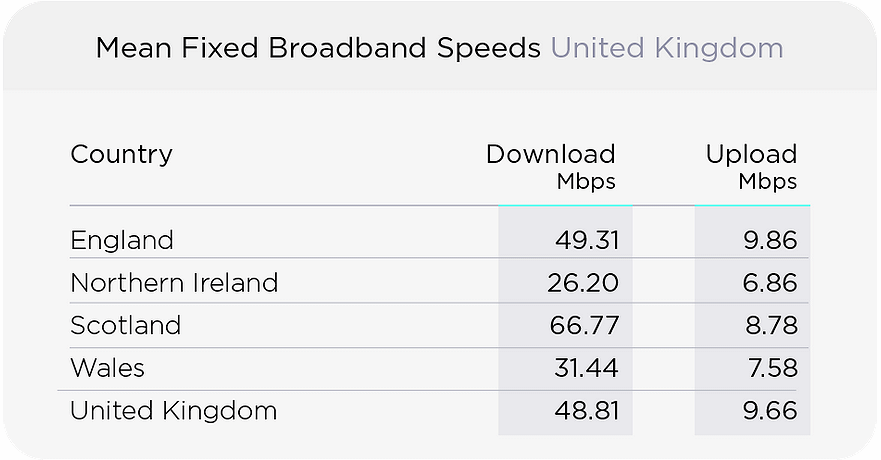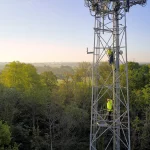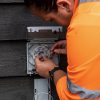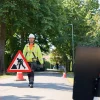Ookla Compares Broadband Speeds in England, Scotland, Wales and N.Ireland
Internet speed measuring company Ookla, which runs the popular Speedtest.net service, has published a short update that breaks the mobile and fixed line broadband speeds of the United Kingdom down by country. Interestingly Scotland comes out on top for fixed broadband performance.
Firstly, the study finds that Mobile Broadband speeds are fairly similar across all four of the countries, ranging from a download speed of 26.19Mbps (11.04Mbps upload) in England to 22.88Mbps (10.55Mbps) in Scotland. In other words, download performance in England is 2.5% faster than the UK as a whole, while in Scotland they are 10.5% slower than the UK average.
This is perhaps unsurprising because the latest 4G networks have all reached strong levels of population coverage in all four countries, with adoption in less well served rural areas only having a fairly limited impact on such results. The split by mobile operator and network platform may well tell a different story but alas this report doesn’t include that sort of detail.
Advertisement

The story for fixed broadband performance is somewhat different. Scotland’s download speed scored 66.77Mbps (8.78Mbps upload), which is 36.8% faster than the UK average and well above England’s 49.31Mbps. Download speeds in Wales and Northern Ireland, on the other hand, are 35.6% and 46.3% slower than the UK average.
All of this seems to be rather odd because in other studies England tends to be the fastest, which is helped by the fact that a higher proportion of premises are covered by “superfast broadband” (24Mbps+) capable networks than in Wales, Northern Ireland and Scotland.

Advertisement
As usual this is the point where we always have to remind readers about the fatal flaw of judging countries by internet speed testing, as well as the problems with Ookla’s own methodology. Like all speedtest based reports it’s still subject to the usual caveats of service take-up, methodology and any constrains of the testing environment.
For example, around 93-94% of UK premises should now be within reach of a “superfast” capable fixed line broadband network, yet just under half of all broadband equipped premises continue to take a slower ADSL based copper line connection. In other words, such reports make for a poor gauge when considering the availability of faster networks.
On top of that Ookla’s reports tend to be more optimistic than most for a number of reasons. One reason is because their data doesn’t distinguish between business (leased lines etc.) and residential connections. We also recall that they had a tendency to drop a sizeable chunk of the slowest tests and a smaller slice of the fastest results, which further reinforces the optimistic scoring.
Mark is a professional technology writer, IT consultant and computer engineer from Dorset (England), he also founded ISPreview in 1999 and enjoys analysing the latest telecoms and broadband developments. Find me on X (Twitter), Mastodon, Facebook, BlueSky, Threads.net and Linkedin.

















































Comments are closed